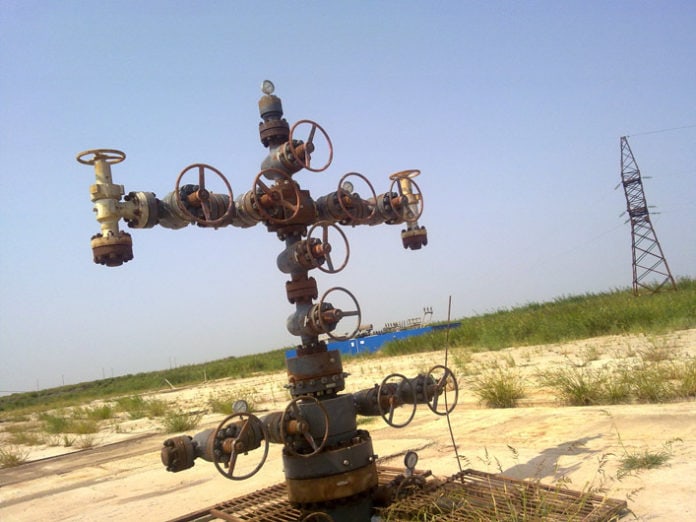Methane gas hydrates are formed when methane is combined with water at low temperatures and high pressure.
Other gasses like propane and ethane can form hydrates as well.
The methane molecules don’t chemically react with water to create gas hydrates but instead are bonded to the water with hydrogen bonds.
After gas hydrate is formed it can stay relatively stable even at temperatures above freezing point which makes it a problem if it is happening inside of the well during production operations.
When gas hydrates do melt they break down back into water and methane.
Related: How Is Natural Gas Formed?
Where Are Gas Hydrates Found?
Gas hydrates can be found on the ocean floor usually around the continents.
Ocean floors have lower temperatures and high pressure which are required for methane hydrates formation.
Even though there are huge amounts of methane locked in hydrates currently there is no easy way to economically extract it.
In addition to ocean floors, gas hydrates can also be found in permafrost beneath the ice.
Permafrost is a ground that stays frozen both during the winter and summer.
It can be found in the northern parts of Russia and Canada.
One concern when it comes to hydrates is global warming.
Methane is a much stronger greenhouse gas than CO2 and when the earth’s temperature increases there is a potential that some of the hydrates hidden under the permafrost might melt releasing methane gas into the atmosphere.
Related: What is LNG and How It Is Used?
Unwanted Natural Gas Hydrates in the Wells and Pipelines
During well operations, hydrates can be formed in the tubing if the temperature drops below a certain point at high pressure and there is a presence of both water and methane.
This blocking of the tubing by hydrate can either decrease production or completely stop it.
The hydrate plug in the tubing has to be removed either by bull heading hot fluid or methanol down the well or using coiled tubing to get closer to the plug and then using a combination of hot fluid/methanol and mechanical force to remove it.
One of the things to keep in mind when removing hydrates in the tubing is the potential of high pressure trapped underneath.
Natural gas hydrates can also be formed in pipelines used for gas transportation.
To avoid hydrate formation gas is often dried by removing water from it.
Sometimes ethylene glycol and methanol are injected into the pipeline to prevent hydrate formation.
Read next: What Is Coal Bed Methane?
Reference:
https://en.wikipedia.org/wiki/Methane_clathrate
